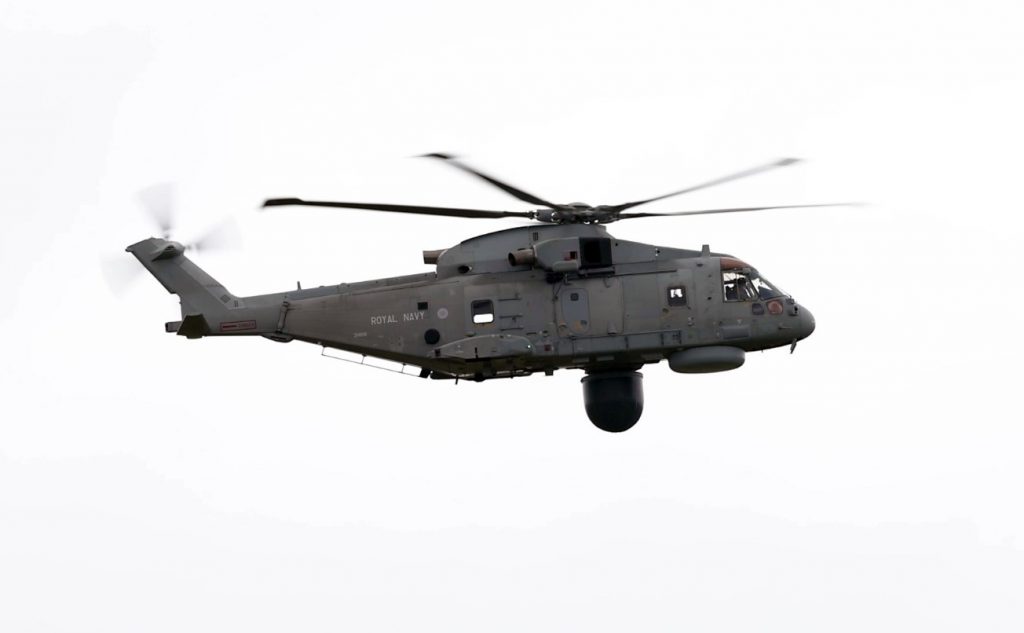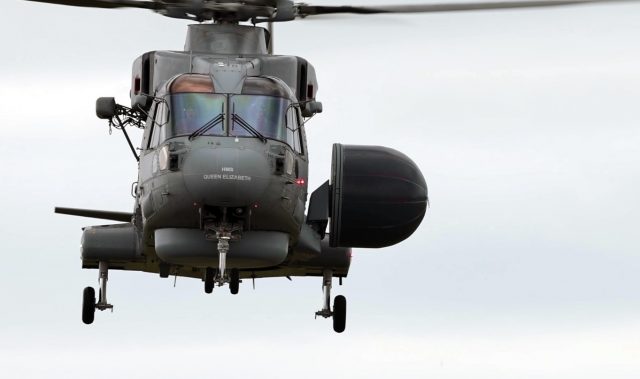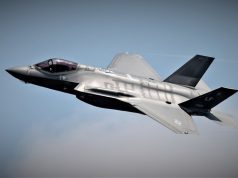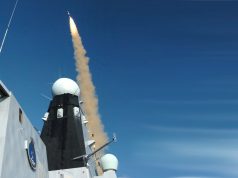After several delays, the first of the Royal Navy’s new Crowsnest airborne early warning radar system has entered service just in time for the maiden deployment of aircraft carrier HMS Queen Elizabeth this spring.
The Crowsnest consists of a Thales Searchwater radar and a Cerberus mission system carried by a Merlin Mk2 helicopter. It was delivered by Lockheed Martin UK under a £269m contract from 2017.
Crowsnest was delivered ahead of the first operational deployment of HMS Queen Elizabeth, despite previous fears that the system would not be ready in time.
The distinctive-looking helicopter, with a large radar dome or ‘bag’ sticking out from the fuselage giving it the nickname ‘bagger’, will provide airborne surveillance and the control of other aircraft (known as ASaC) in the carrier’s strike group.
The new generation of baggers pick up the mantle of the navy’s veteran Sea Kings of 849 Naval Air Squadron (now retired) – and like their predecessors will be based at Royal Naval Air Station Culdrose, which also provides anti-submarine Merlin aircraft to protect the fleet.
Training by aircrews to use the new system, which allows crews to conduct air and missile defense as well as strike command and control, has been underway since the autumn.

Captain Stuart Finn, the commanding officer of RNAS Culdrose said: “The delivery of this first aircraft at Culdrose represents an enormous amount of hard work, dedication and passion across the defense and industry enterprise. It marks a significant moment for the Royal Navy as we become a carrier task group navy capable of deploying around the world as a sovereign group or with our allies.”
The Merlins have a crew of three: two observers (mission and tactical specialists) and one pilot. High above the fleet with their sophisticated sensors, they enable the carrier strike group commander to see, understand and react well beyond the horizon for any air or surface threats. They can also act as a control center for strike operations between the carrier and the ship’s F-35B fighters.
Commodore Steve Moorhouse, Commander UK Carrier Strike Group, who will direct HMS Queen Elizabeth’s first deployment with the help of his staff, said the new Merlins were the final pieces in the group’s large, complex jigsaw.
“It’s hugely encouraging to see the progress of the Crowsnest trials. Already one the most advanced submarine hunters, the Merlin Crowsnest will offer long-range intelligence and surveillance against surface and airborne threats, and the ability to command and control strike missions,” he said.



























